Since the beginning of time, people have lived in caves. But few have ever built one. Junya Ishigami, a Tokyo architect who goes to extremes, is one of them. In 2003, Ishigami launched his practice with the design of razor-thin metal tables for a friend’s restaurant. Coming back for seconds, the same chef asked Ishigami for a new building combining his home and a new restaurant. This time, the client wanted to go “heavy.” And he wanted to go “old.” Unsurprisingly, these requests led Ishigami to an unconventional solution.
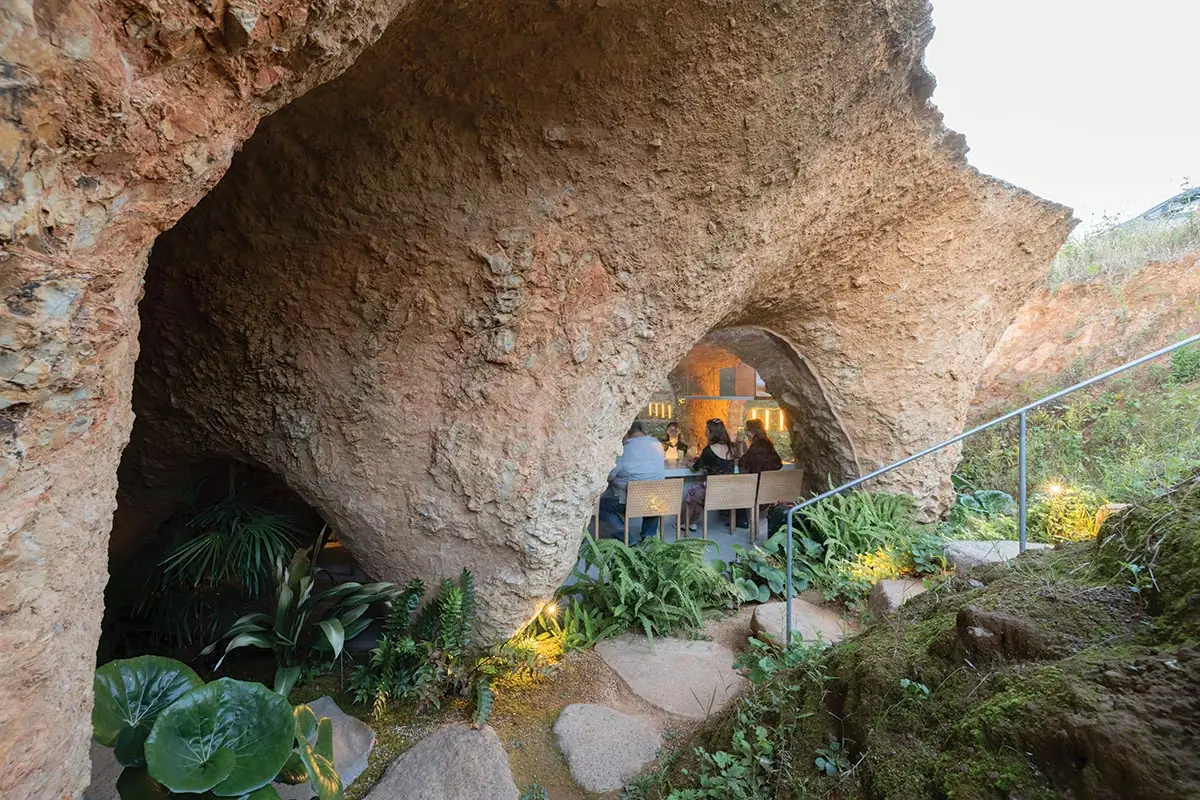
1
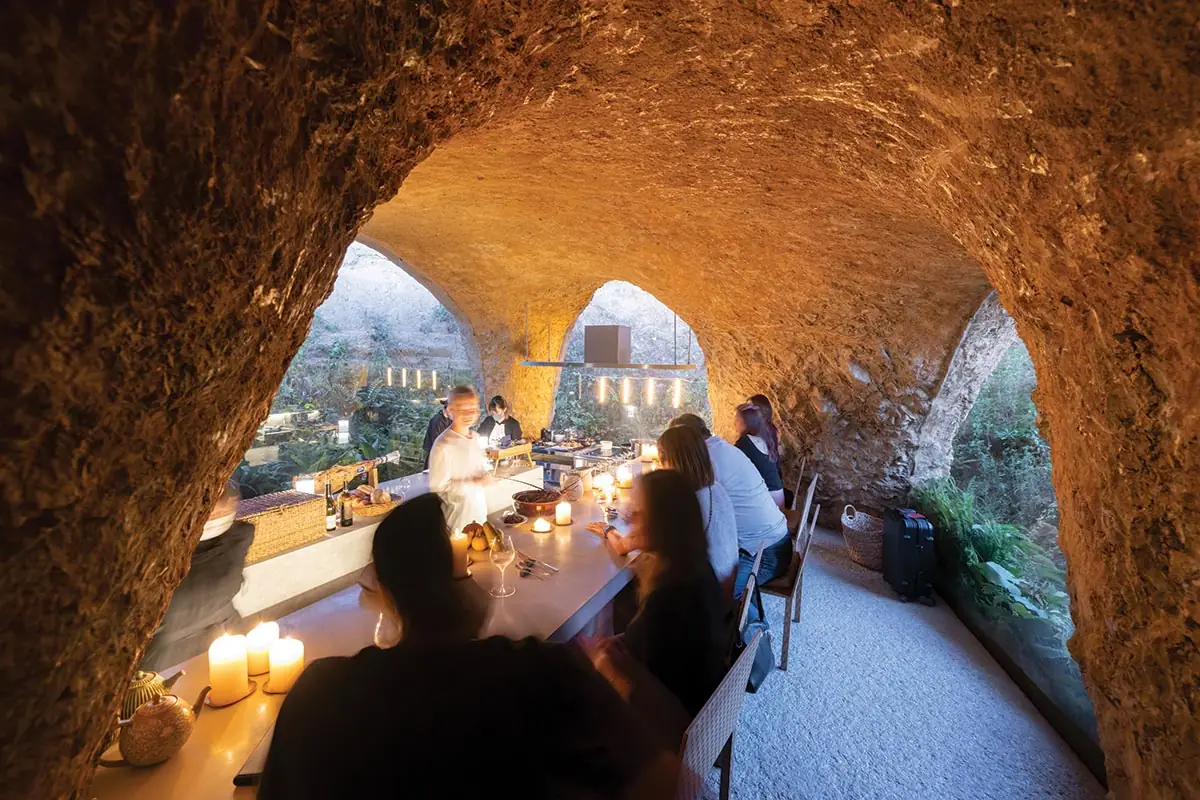
2
Steps down from the street (1), the cave-like restaurant has an open kitchen with bar seating (2) and Ishigami-designed tables and chairs in the dining room (top of page). Photos © Iwan Baan, click to enlarge.
“Normally, new buildings made to look old resemble theme parks,” says the architect. He avoided this pitfall, reasoning that all construction eventually goes to ruin, and ruins return to the landscape—a thought that undoubtedly inspired him to start with the ground itself. Secured by an existing retaining wall, the site is 10 feet higher than the adjacent road. Digging down instead of building up, he took advantage of the clay-rich earth to mold a poured-in-place concrete structure. Only after the concrete had cured and the surrounding soil had been excavated was the impact of Ishigami’s architecture revealed. Made entirely from scratch, this craggy, primitive-looking place, crusted with brown bits of dirt, turned out to be just what the client ordered.
The 9,800-square-foot property sits amid a growing residential area in the southern Japanese city of Ube. It is bordered by undevelopable farmland (it lacks the requisite vehicular access) on one side and by the street on the other, but the retaining wall conceals Ishigami’s project from passersby. Straddling this level change—one must go up to go down—a sloped drive ascends from the road to a flat parking area for three cars. From there the ground descends, and a forked stepping stone path leads to separate entrances for the restaurant on the building’s north side and the residence on its south.
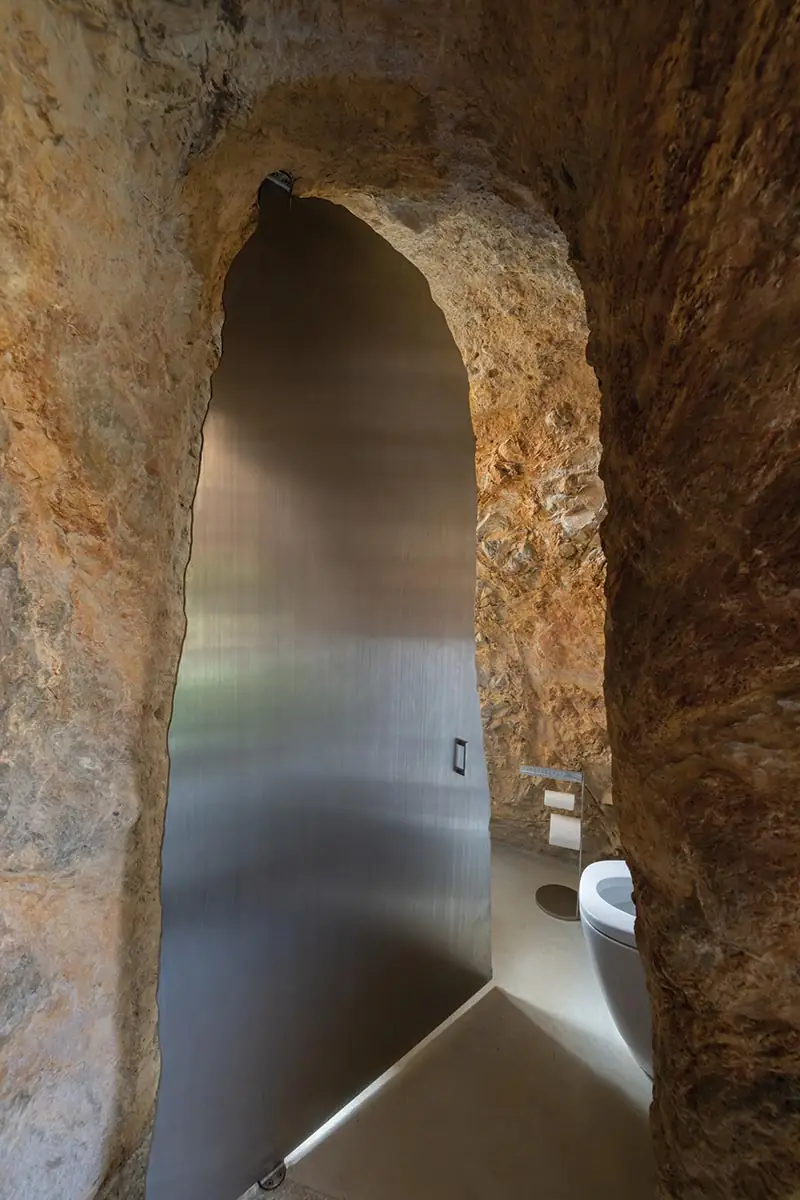
A steel door conceals the residential toilet. Photo © Iwan Baan
Between these two equal-size halves are three shared courtyards. Inside the building, functional areas are mainly defined by the concrete elements. “Some are more like walls, and others are more like columns,” says the architect. Serving a maximum of 10 invited guests per evening, the restaurant’s fluid interior begins with a reception area that segues into the dining room in one direction and, in the other, an open kitchen with counter seating, which enables patrons to banter with the chef—a desirable ingredient for dining in Japan. By contrast, the home is a warren of individuated spaces, with the primary bedroom, washroom, and bathroom to the right of the entrance, and on the left the living room, dining room, kitchen, toilet, and a bedroom for the clients’ two children. Sunken floors in the bathroom, living room, and kitchen differentiate these areas further.
Naturally, positioning and shaping the concrete was Ishigami’s primary design challenge. He started by locating each programmatic piece in relation to the others and building a physical model to decide where to place the necessary vertical supports. Scanning the model yielded data, which informed design revisions and adjustments to that model—steps repeated several times to refine the scheme. Transferring this information to the site was another complication. “Usually, we make guidelines on the ground to position the structure,” explains Ishigami. But this time, since the ground plane was buried, a laser measuring system mapped the location and depth of the holes. Dug by hand, these acted as the concrete formwork. “When we use plywood forms, we must consider how the wood can be curved, but soil gives a high degree of freedom, and curvature with a small radius becomes feasible,” explains the project’s structural engineer, Jun Sato.
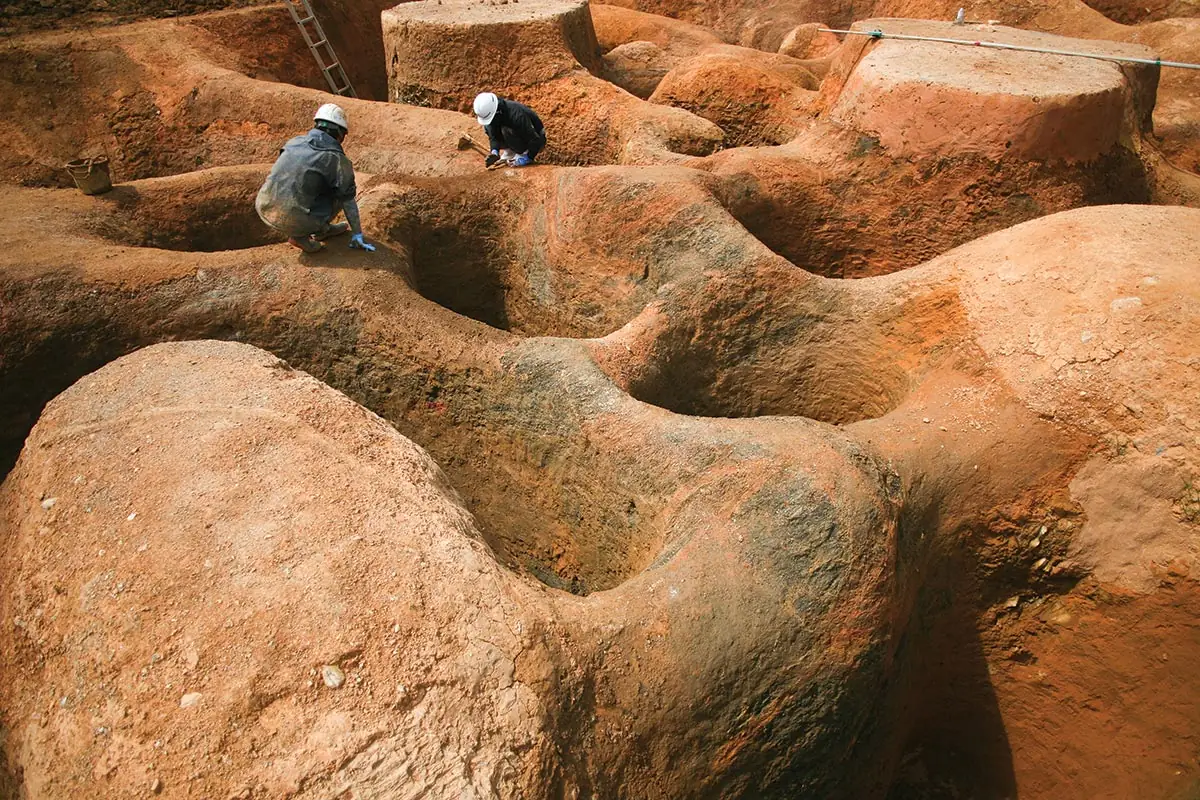
3
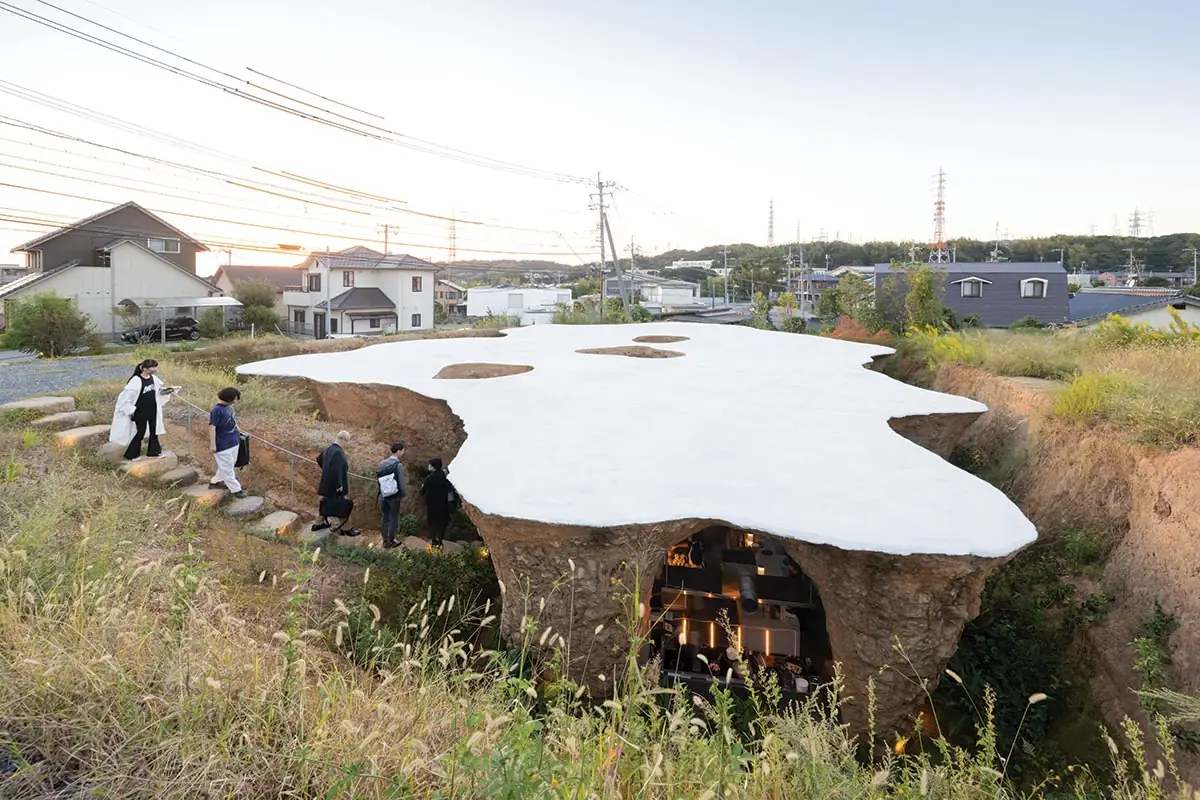
4
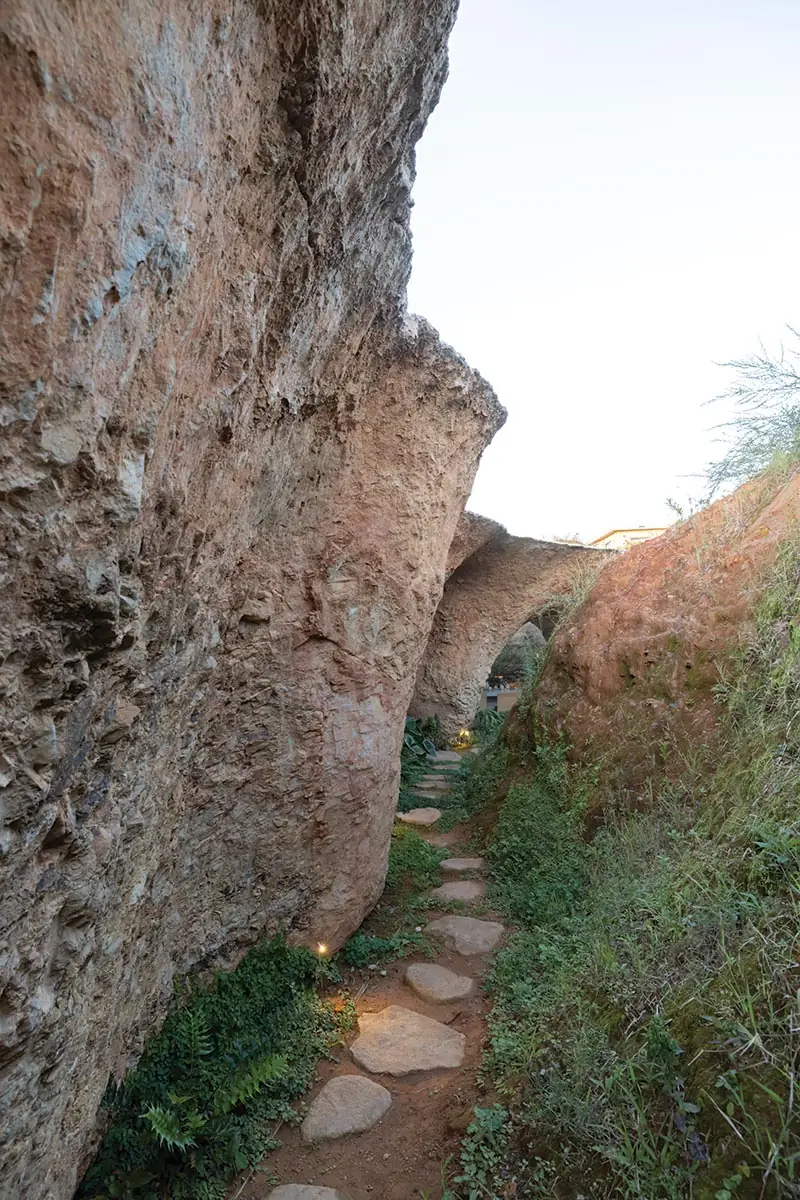
5
The design and construction teams worked closely to create the below-grade earthen formwork (3) for the completed reinforced-concrete structure (4), which retains a coating of soil (5). Photos © Iwan Baan
Though the design phase lasted a year and a half, it took a mere seven hours to pour the archlike concrete slabs and cone-shaped columns. Fortunately, the hardness, and therefore strength, of the earth underneath the building meant the vertical supports could be made purely of concrete. The only rebar is located just beneath the outer surfaces of the columns. Forming their feet, the exposed steel was extended beyond the concrete and perched on the ground, creating a gap between the concrete and the ground. Two weeks later, after the concrete had solidified, the months-long process of soil removal began. And then came Ishigami’s eureka moment. “The structure looked so similar to the natural soil surface; it looked like a part of the landscape,” he recalls. Preserving this impression, the concrete surfaces, caked with earth, were simply coated with sealant.
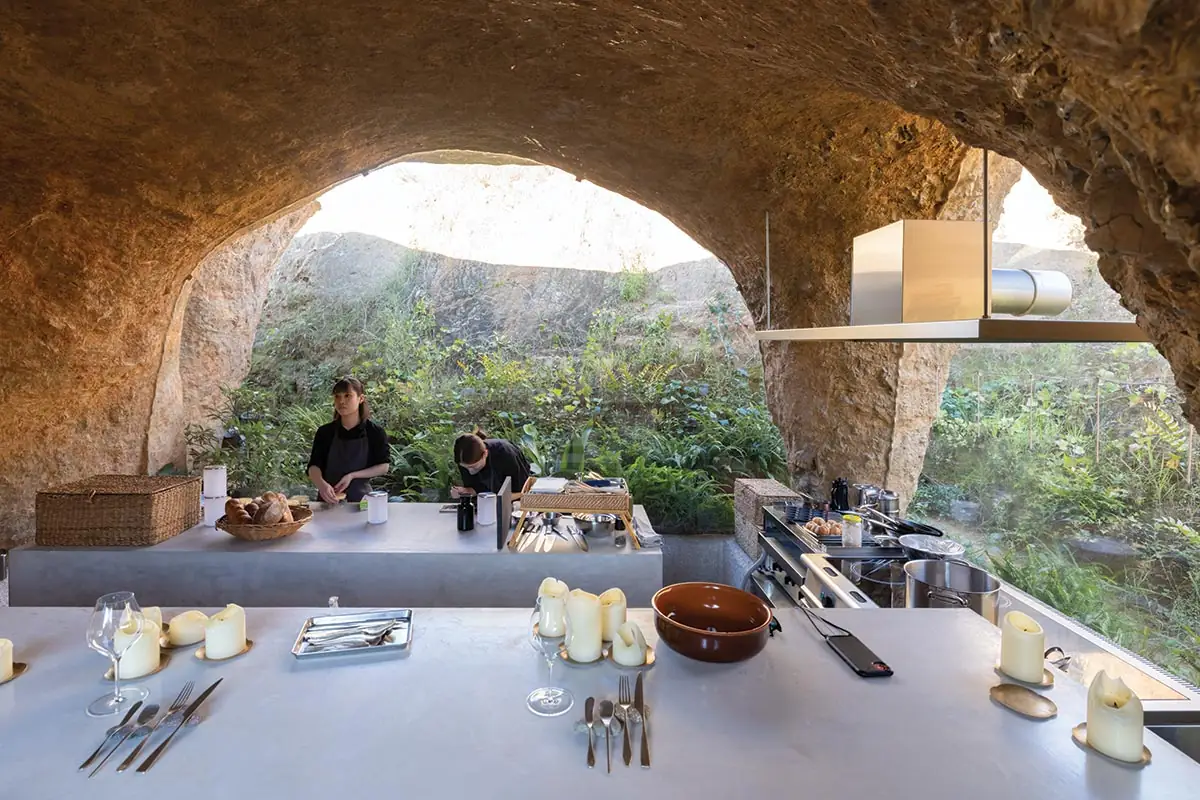
7
Lazer-cut glass filling the openings allows daylight to infiltrate the interiors of the restaurant (7) and home (8 & 9). Photos © Iwan Baan
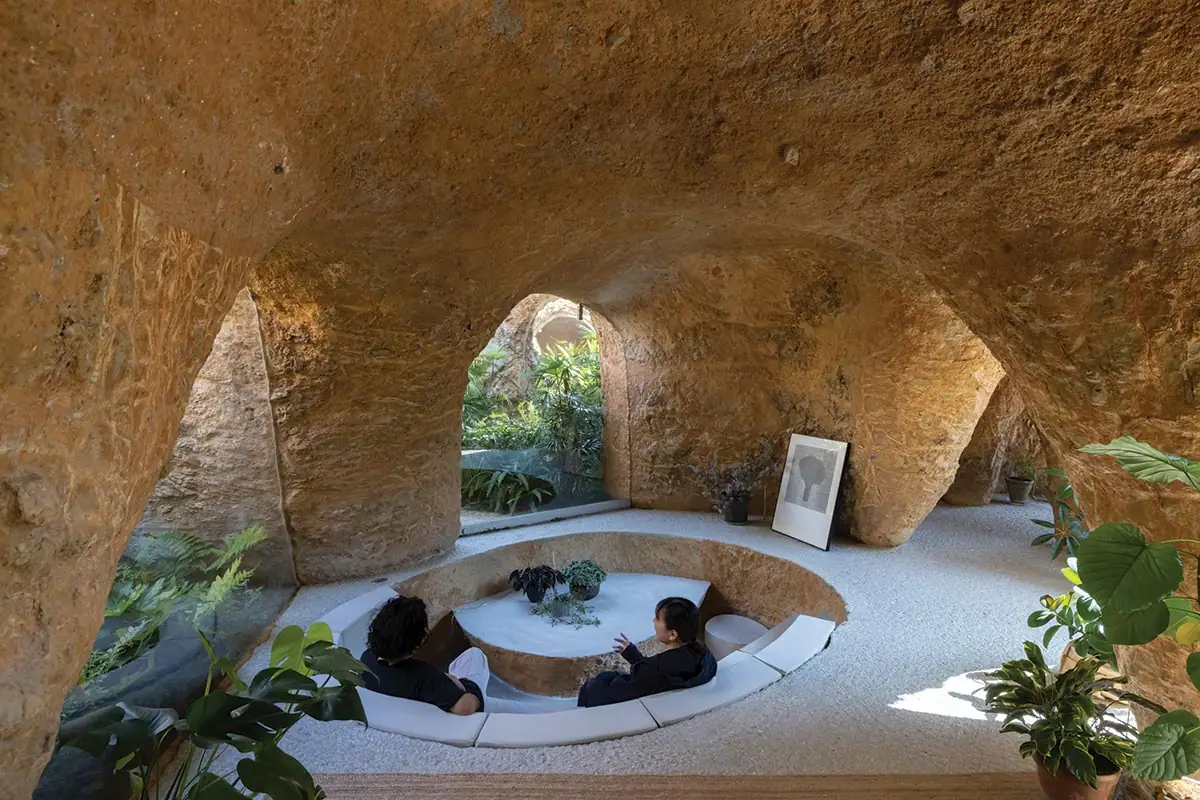
8
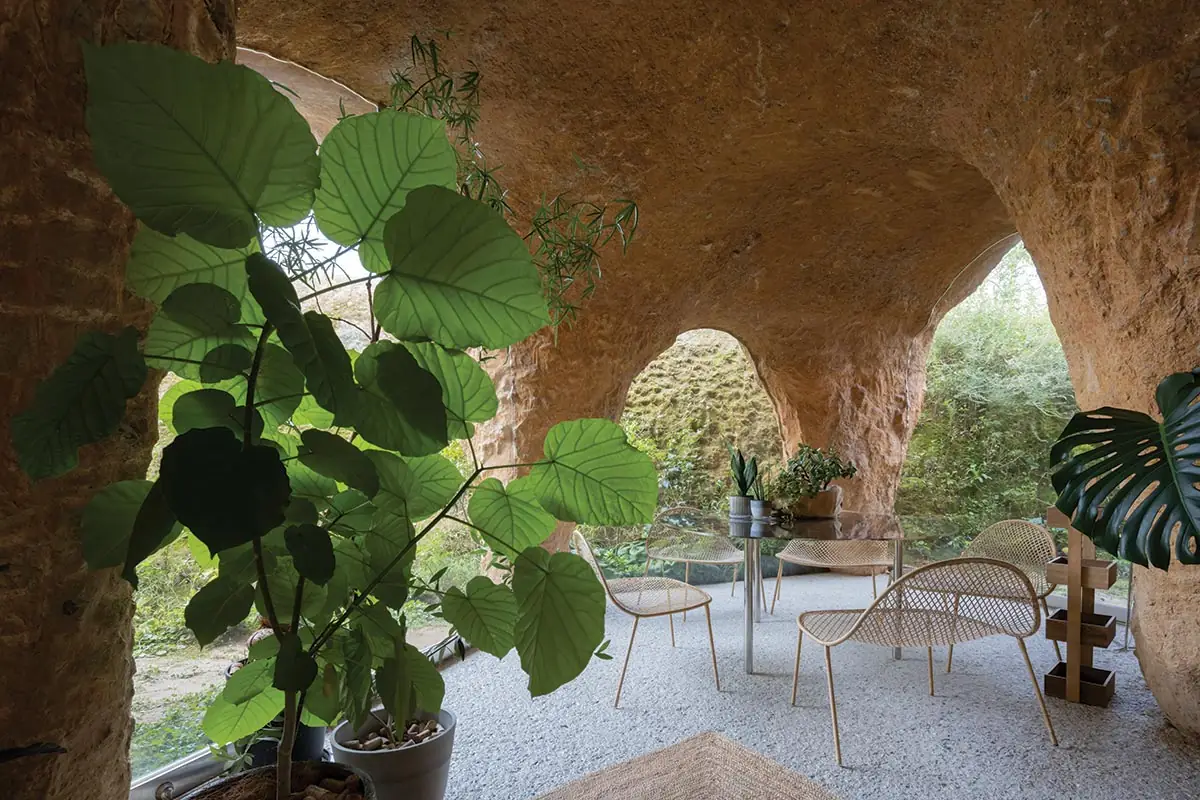
9
The conversion of this prehistoric-looking place into habitable space started with pouring a reinforced-concrete floor. Filling the gap beneath the concrete columns, the floor anchors their rebar and disperses the load. “Before the slab was poured, the pressure was really great at the bottom of the columns,” recalls Sato. To enclose the interior, single-pane glass was inserted in the arched openings, turning them into windows and doors. To ensure a perfect fit, the perimeter of each aperture was scanned to document its precise shape and create data to guide the laser cutter. In some places, the glass is fixed; elsewhere, it swivels on pivot hinges. While climate control is provided by a central HVAC system in the restaurant, individual units are used in each room of the residence. In both the commercial and domestic areas, custom furniture and lighting ensure plenty of creature comfort.
Since the construction of House & Restaurant was initially buried, and done by hand, numerous decisions and adjustments had to be made in the field. This is a common practice in Japan, but Ishigami takes that practice to new heights. Like his client in the kitchen, Ishigami creates by feel and instinct, and therein lies the strength and clarity of his architecture.
Click plan to enlarge
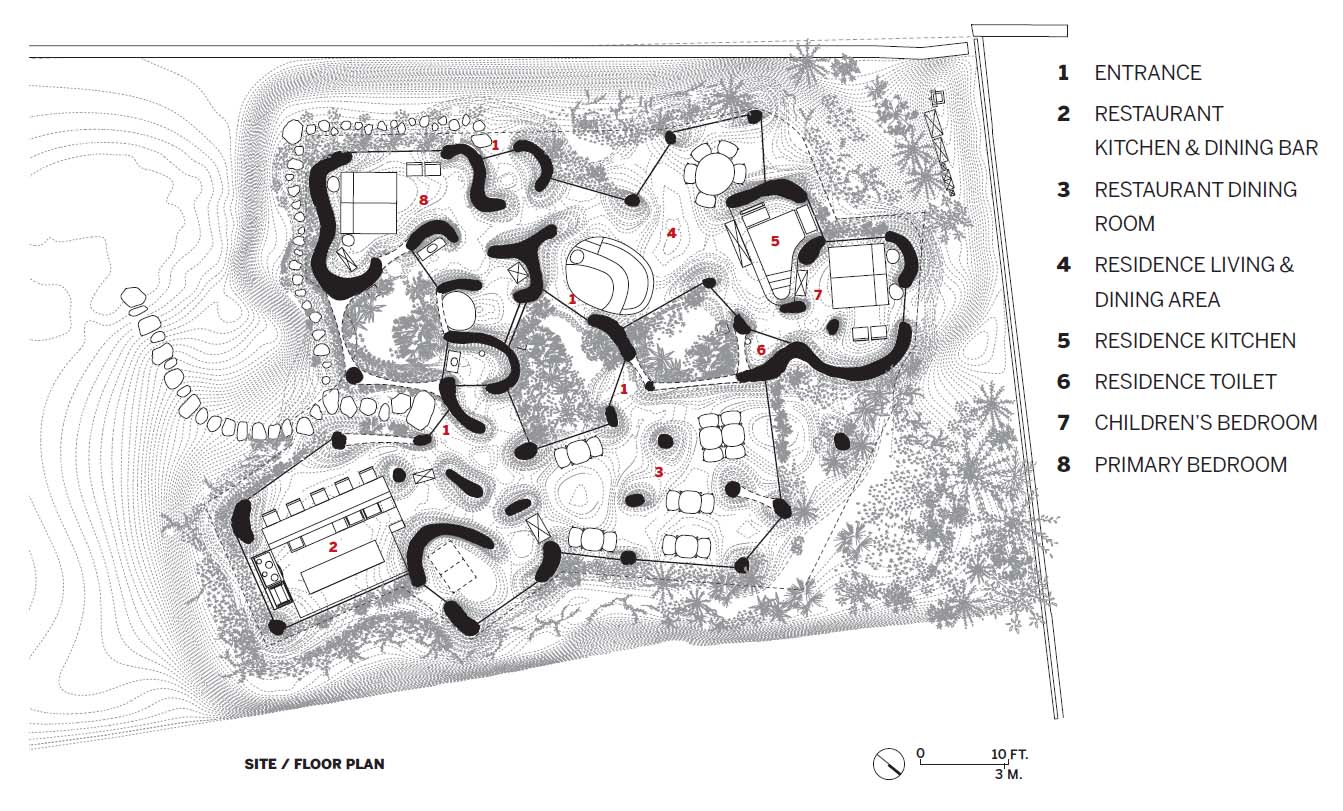
Credits
Architect:
junya.ishigami<+associates — junya ishigami, principal; taeko abe, jaehyub ko, takuya nakayama (design team)< p>
Engineers:
Jun Sato Structural Engineers
General Contractor:
Akita Kensetsu
Consultants:
Echo Mechanical Plumber (m/e/p); SOLSO (landscape); Izumi Okayasu Lighting Design Office
Client:
Motonori Hirata
Size:
9,800 square feet (site); 2,900 square feet (building)
Cost:
Withheld
Completion Date:
March 2022
+associates>
Sources
Glass:
Meiji Glass Company
Fixtures:
Yanagiya
Furniture:
Gotanda Seisakusho, I.D.Works
Curtains:
Yoko Ando Design
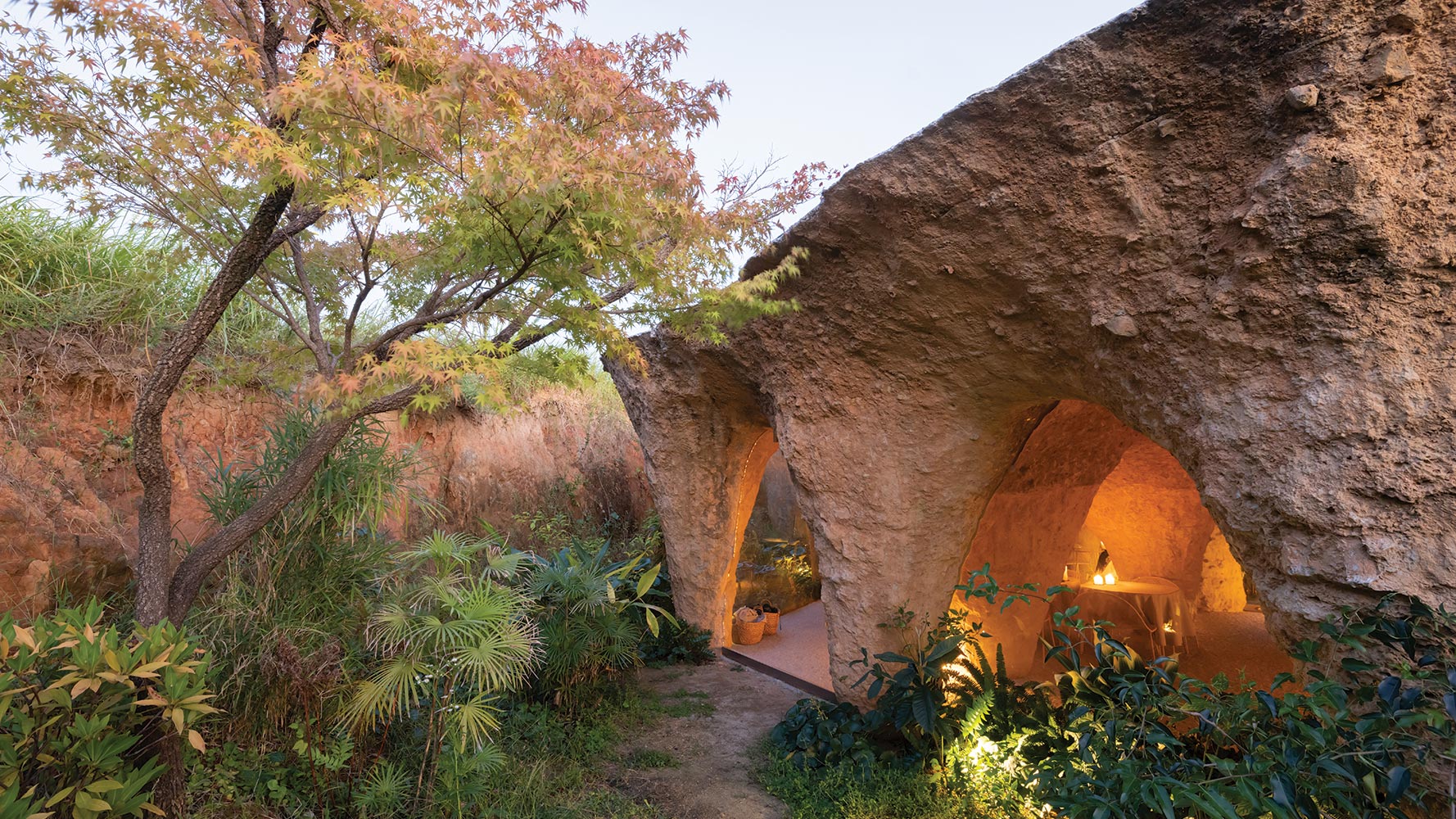

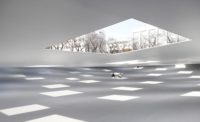
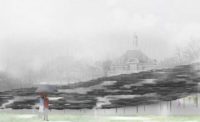
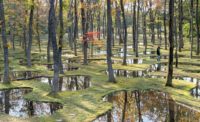
Post a comment to this article
Report Abusive Comment